Canadian Energy Centre
New deal with global gas giant Shell shows Canada is on the map for LNG: specialist
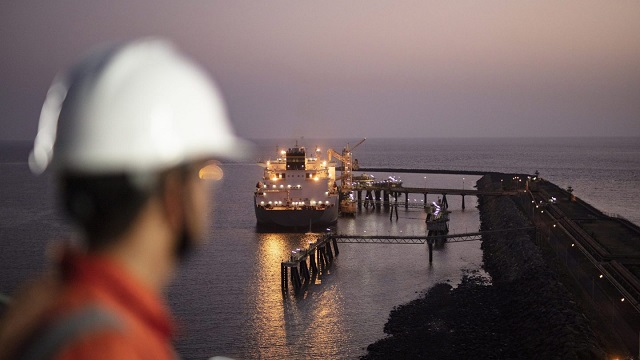
A worker at Shell’s Hazira LNG import terminal, about 250 kilometers from Mumbai, India. Photo courtesy Shell
From the Canadian Energy Centre
By Deborah Jaremko‘This is a signal that the LNG demand is viable beyond 2050’
A new 20-year deal by global energy giant Shell to purchase liquefied natural gas (LNG) from British Columbia is a sign Canada is becoming a player in global LNG markets, says an industry specialist.
Shell has agreed to buy two million tonnes of LNG per year from the proposed Ksi Lisims LNG project located near the Alaska border, which could start operating in 2028.
“Canada is on the map now for LNG. This is a signal that the LNG demand is viable beyond 2050,” says Racim Gribaa, president of Calgary-based Global LNG Consulting.
Gribaa has worked in energy for more than two decades, engaging with governments and industry on LNG developments around the world including Malaysia, the United States, Canada and Qatar.
Long-term LNG deals like the one struck by Ksi Lisims and Shell are hard to come by, he says, and are a sign that so-called LNG “portfolio players” trust the ability of Canada’s natural gas industry to deliver.
A portfolio player like Shell buys LNG from various suppliers and distributes it to buyers around the world – versus a buyer that purchases LNG solely for its own use.
“When portfolio players buy LNG, it’s not necessarily for a specific country. They can sell it anywhere they want,” Gribaa says.
“Canada’s west coast can enable them to sell cargo to efficiently meet demand in Asia without having to ship it all the way from farther locations. Instead of them shipping cargo from the Middle East, Europe, or from the U.S. thereby avoiding longer journeys around the Cape or going through the Strait of Hormuz or Panama Canal, instead they just send it straight from Canada to where they need it to go. It’s economically and logistically beneficial for them.”
Driven by expanding economies in Asia, world LNG trade has increased by more than 200 per cent since 2000, reaching 401 million tonnes in 2022, according to the International Gas Union.
Global natural gas use is rising, driving increased demand for LNG. The U.S. Energy Information Administration’s latest outlook projects natural gas consumption will rise to 197 quadrillion BTU in 2050, up from 153 quadrillion BTU in 2022.
In addition to the deal with Ksi Lisims owners including the Nisga’a Nation, Shell is also lead owner of the LNG Canada project, which is nearing completion at Kitimat, B.C.
The terminal will have capacity of 14 million tonnes per year when it starts up in 2025. The buyers of the exports from LNG Canada are its owners, including Shell and Petronas.
Shell’s decision to purchase LNG from Ksi Lisims could ensure it has plentiful supply available regardless of the timeline of the second phase of LNG Canada, Gribaa says.
“For a portfolio player, having options is valuable. We have enough demand globally to meet both Ksi Lisims LNG and LNG Canada phase 2, especially as coal is gradually faded out from Asia’s power mix,” he says.
“The only viable solution is to replace it with natural gas through LNG, as well as renewables, so the demand is forecast to be strong for several decades to come.”
Growing Canada’s LNG exports to Asia could reduce emissions by 188 million tonnes per year, or the annual equivalent of taking all internal combustion engine vehicles off Canadian roads, according to a 2022 study by Wood Mackenzie.
Down the coast from LNG Canada at Squamish, B.C. another major portfolio player is leaning on Canadian LNG.
BP Gas Marketing is the foundational customer for the Woodfibre LNG project, where early construction is underway.
Over a 15-year period, BP will purchase 1.95 million tonnes of the project’s 2.1 million tonne per year LNG capacity, and the remaining 0.15 million tonnes per year “on a flexible basis.”
“When you have such commercial commitments inked, it provides a future perspective on supply and demand, and perhaps most importantly it asserts the importance of Canada’s role in providing the world with a clean, affordable and secure long term LNG supply,” Gribaa says.
Alberta
U.S. tariffs or not, Canada needs to build new oil and gas pipeline space fast
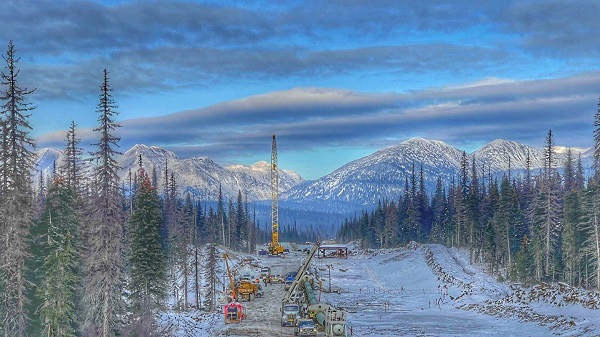
From the Canadian Energy Centre
Expansion work underway takes on greater importance amid trade dispute
Last April, as the frozen landscape began its spring thaw, a 23-kilometre stretch of newly built pipeline started moving natural gas across northwest Alberta.
There was no fanfare when this small extension of TC Energy’s Nova Gas Transmission Limited (NGTL) system went online – adding room for more gas than all the homes in Calgary use every day.
It’s part of the ongoing expansion of the NGTL system, which connects natural gas from British Columbia and Alberta to the vast TC Energy network. In fact, one in every 10 molecules of natural gas moved across North America touches NGTL.
With new uncertainty emerging from Canada’s biggest oil and gas customer – the United States – there is a rallying cry to get new major pipelines built to reach across Canada and to wider markets.
Canada’s Natural Resources Minister Jonathan Wilkinson recently said the country should consider building a new west-east oil pipeline following U.S. President Donald Trump’s threat of tariffs, calling the current lack of cross-country pipelines a “vulnerability,” CBC reported.
“I think we need to reflect on that,” Wilkinson said. “That creates some degree of uncertainty. I think, in that context, we will as a country want to have some conversations about infrastructure that provides greater security for us.”
Many industry experts see the threat to Canada’s economy as a wake-up call for national competitiveness, arguing to keep up the momentum following the long-awaited completion of two massive pipelines across British Columbia over the last 18 months. Both of which took more than a decade to build amidst political turmoil, regulatory hurdles, activist opposition and huge cost overruns.
On May 1, 2024, the Trans Mountain pipeline expansion (TMX) started delivering crude oil to the West Coast, providing a much-needed outlet for Alberta’s growing oil production.
Several months before that, TC Energy finished work on the 670-kilometre Coastal Gaslink pipeline, which provides the first direct path for Canadian natural gas to reach international markets when the LNG Canada export terminal in Kitimat begins operating later this year.
TMX and Coastal GasLink provide enormous benefits for the Canadian economy, but neither are sufficient to meet the long-term growth of oil and gas production in Western Canada.
More oil pipeline capacity needed soon
TMX added 590,000 barrels per day of pipeline capacity, nearly tripling the volume of crude reaching the West Coast where it can be shipped to international markets.
In less than a year, the extra capacity has enabled Canadian oil production to reach all-time highs of more than five million barrels per day.
More oil reaching tidewater has also shrunk the traditional discount on Alberta’s heavy oil, generating an extra $10 billion in revenues, while crude oil exports to Asia have surged from $49 million in 2023 to $3.6 billion in 2024, according to ATB analyst Mark Parsons.
 With oil production continuing to grow, the need for more pipeline space could return as soon as next year, according to analysts and major pipeline operators.
With oil production continuing to grow, the need for more pipeline space could return as soon as next year, according to analysts and major pipeline operators.
Even shortly after TMX began operation, S&P Global analysts Celina Hwang and Kevin Birn warned that “by early 2026, we forecast the need for further export capacity to ensure that the system remains balanced on pipeline economics.”
Pipeline owners are hoping to get ahead of another oil glut, with plans to expand existing systems already underway.
Trans Mountain vice-president Jason Balasch told Reuters the company is looking at projects that could add up to 300,000 barrels per day (bpd) of capacity within the next five years.
Meanwhile, Canada’s biggest oil pipeline company is working with Alberta’s government and other customers to expand its major export pipelines as part of the province’s plan to double crude production in the coming years.
Enbridge expects it can add as much as 300,000 bpd of capacity out of Western Canada by 2028 through optimization of its Mainline system and U.S. market access pipelines.
Enbridge spokesperson Gina Sutherland said the company can add capacity in a number of ways including system optimizations and the use of so-called drag reducing agents, which allow more fluid to flow by reducing turbulence.
LNG and electricity drive strong demand for natural gas
Growing global demand for energy also presents enormous opportunities for Canada’s natural gas industry, which also requires new transportation infrastructure to keep pace with demand at home and abroad.
The first phase of the LNG Canada export terminal is expected to begin shipping 1.8 billion cubic feet of gas per day (Bcf/d) later this year, spurring the first big step in an expected 30 per cent increase in gas production in Western Canada over the next decade.
With additional LNG projects in development and demand increasing, the spiderweb of pipes that gathers Alberta and B.C.’s abundant gas supplies need to continue to grow.
TC Energy CEO Francois Poirier is “very bullish” about the prosect of building a second phase of the recently completed Coastal GasLink pipeline connecting natural gas in northeast B.C. to LNG terminals on the coast at Kitimat.
The company is also continuously expanding NGTL, which transports about 80 per cent of Western Canada’s production, with more than $3 billion in growth projects planned by 2030 to add another 1 Bcf/d of capacity.
Meanwhile Enbridge sees about $7 billion in future growth opportunities on its natural gas system in British Columbia.
In addition to burgeoning LNG exports from Canada, the U.S. and Mexico, TC Energy sees huge potential for gas to continue replacing coal-fired electricity generation, especially as a boom in power-hunger data centres unfolds.
With such strong prospects for North America’s highly integrated energy system, Poirier recently argued in the Wall Street Journal that leaders should be focused on finding common ground for energy in the current trade dispute.
“Our collective strength on energy provides a chance to expand our economies, advance national security and reduce global emissions,“ he wrote in a Feb. 3 OpEd.
“By working together across North America and supporting the free flow of energy throughout the continent, we can achieve energy security, affordability and reliability more effectively than any country could achieve on its own.”
Banks
The Great Exodus from the Net Zero Banking Alliance has arrived
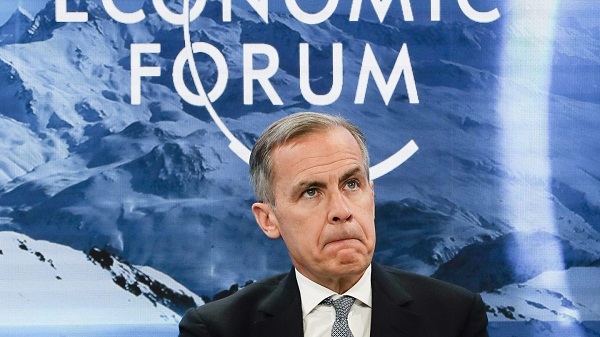
From the Canadian Energy Centre
By Gina Pappano
Next, we need a Great Exodus from net zero ideology
In 2021, all of Canada’s Big Five Banks – TD, CIBC, BMO, Scotiabank and RBC – signed onto the Glasgow Financial Alliance for Net Zero (GFANZ) and the Net Zero Banking Alliance (NZBA).
U.N.-sponsored and Mark Carney-led, GFANZ is a sector-wide umbrella coalition whose goal is to accelerate global decarbonization and the emergence of a worldwide net zero global economy.
But now, in the first month of 2025, four of Canada’s Big Five Banks – TD, CIBC, BMO and Scotiabank – have announced their decision to exit the NZBA.
This came on the heels of similar announcements by six of the biggest U.S. banks – Bank of America, Citigroup, Goldman Sachs, JP Morgan, Morgan Stanley and Wells Fargo as well as the investment firm BlackRock leaving the Asset Management subgroup of the GFANZ.
That group, the Net Zero Asset Managers Initiative, has now suspended operations altogether, and the GFANZ and all of its subgroups are falling like a house of cards.
At InvestNow, the not-for-profit that I lead, we’re considering these developments a victory and a vindication of our work.
In November of 2024, we submitted shareholder proposals to Canada’s Big Five banks asking them to leave both the NZBA and the GFANZ. As of this writing, all but one of them have done just that.
But this is only a partial victory.
When they signed on to the NZBA, the banks pledged to align their lending, investment and banking activities with decarbonization goals, including achieving net zero emissions by 2050. They pledged to focus on higher emitting sectors first and foremost. In practice, this means they would be setting their sights on Canada’s natural resource sector.
That’s because the net zero ideology motivating these groups requires the drastic reduction of oil and gas production and use over a comparatively short period of time.
That is a serious threat to Canada since we’ve been blessed with an abundance of natural resources. Hydrocarbon energy has become the backbone of our economy, and the war being waged against it has already made our lives harder and more expensive. Left unchecked, these difficulties will compound, with ruinous results.
In joining the NZBA, the Big Five Banks agreed to divest from oil and gas, eliminating projects and companies from the investment pool simply because of the sector they work in, as part of a long-term goal of totally decarbonizing the economy.
Presumably, having left the Alliance, those banks could now change course, increasing investment in and lending to oil and gas firms with an eye toward increasing the return on investment for their shareholders.
Except the banks have stressed that they have no intention of doing so. In the press releases and articles about leaving the NZBA, each bank emphasized that this move should not be interpreted as them abandoning net zero itself. All of these banks remain committed to aligning their activities with decarbonization, no matter the cost to Canada, the Canadian economy or the good of its citizens.
This means we still have work to do. While we applaud the banks for exiting the NZBA, we will continue to work to get them to leave behind the net zero ideology as well. Then, and only then, will we claim a full victory.
Gina Pappano is the former head of market intelligence at the Toronto Stock Exchange and TSX Venture Exchange and executive director of InvestNow , a non-profit dedicated to demonstrating that investing in Canada’s resource sectors helps Canada and the world. Join the movement and pass the InvestNow resolution at investnow.org.
-
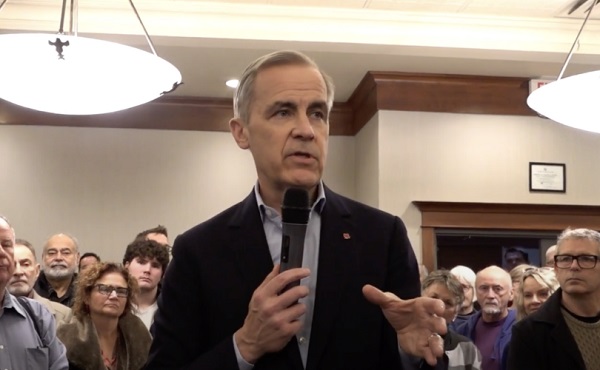
 Carbon Tax2 days ago
Carbon Tax2 days agoMark Carney has history of supporting CBDCs, endorsed Freedom Convoy crackdown
-

 Censorship Industrial Complex2 days ago
Censorship Industrial Complex2 days agoBipartisan US Coalition Finally Tells Europe, and the FBI, to Shove It
-
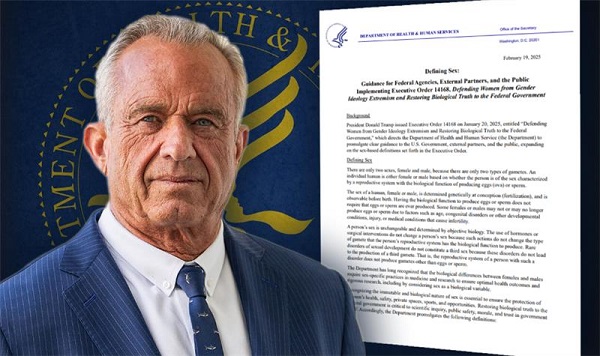
 Health2 days ago
Health2 days agoTrump HHS officially declares only two sexes: ‘Back to science and common sense’
-

 Indigenous13 hours ago
Indigenous13 hours agoTrudeau gov’t to halt funds for ‘unmarked graves’ search after millions spent, no bodies found
-

 Business1 day ago
Business1 day agoFederal Heritage Minister recommends nearly doubling CBC funding and reducing accountability
-

 Business1 day ago
Business1 day agoArgentina’s Javier Milei gives Elon Musk chainsaw
-

 International2 days ago
International2 days agoSenate votes to confirm Kash Patel as Trump’s FBI director
-

 Business2 days ago
Business2 days agoGovernment debt burden increasing across Canada






